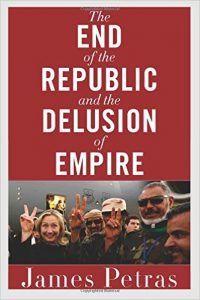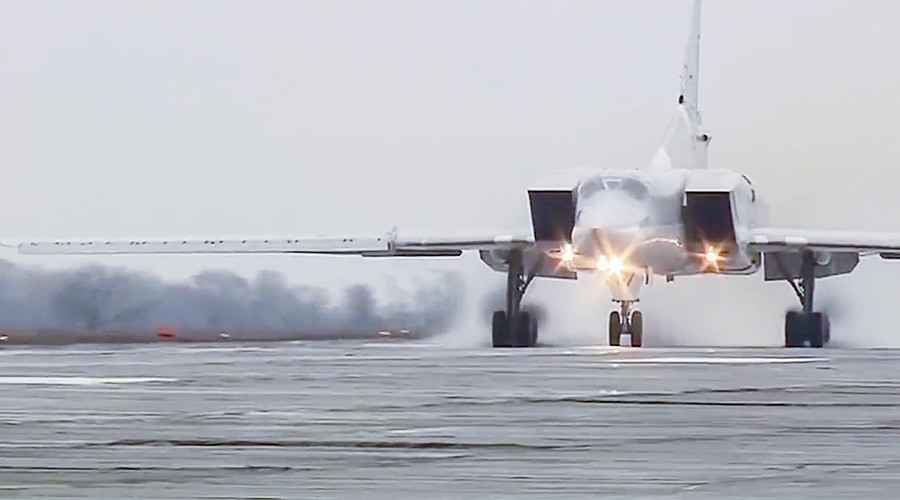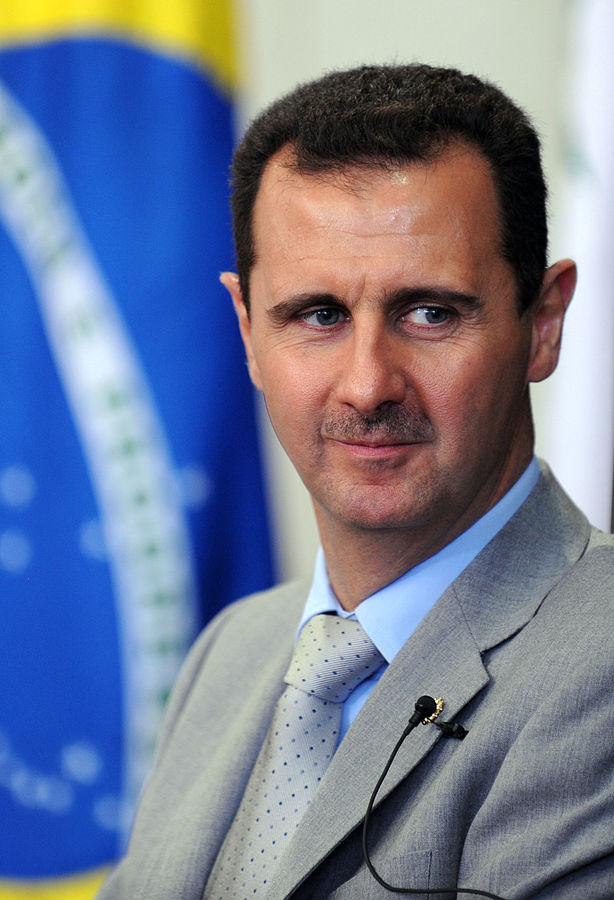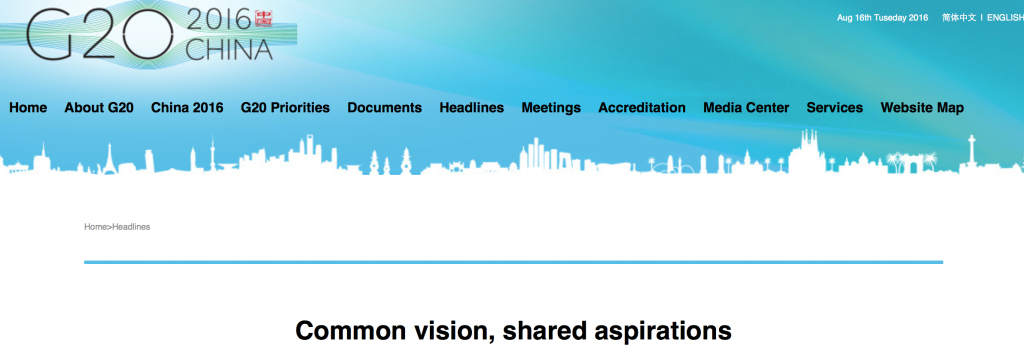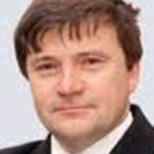For decades Israel has been driving Palestinian farmers off their land by imposing restrictions on agriculture. But one company, Canaan Fair Trade, has found an innovative way to resist
www.ameu.org/Current-Issue/Current-Issue/2016-Volume-49/Agro-Resistance.aspx – August 2016
For a PDF version, click here
Across the West Bank, olive trees can be found that have survived from the time of Herod, a legacy of the Romans’ cultivation of the tree throughout its empire, including in Palestine. The trees are easily identified. In Arabic, they are known as “amoud” – or column – distinguished by the enormous girth of their gnarled, twisting trunks. They have a place in most Palestinians’ affections. Hatim Kanaaneh, the Galilee physician and writer, observes that the amoud symbolises “stability, permanence and stature – physically, figuratively and economically”.
The olive tree roots Palestinians in a tradition and identity as deeply as the trees themselves are rooted in the soil. When the first heavy winter rains wash away the dust of the summer drought from the leaves and fruit in late October or early November, extended families hurry out to their fields to harvest the crop. Erecting ladders, they reach into the grey-green foliage to pick the abundant fruit. The distinctive, gentle patter of an olive rainfall can be heard on the tarpaulins below.
For a few weeks, the hills and valleys of Palestine are filled with families, young and old, sharing a simple life outdoors together under the trees – one their great-grandparents would have recognised. With an estimated 10 million trees growing in the valleys and on the hillsides of the West Bank, it is huge undertaking that much of the society mobilises for. It is a moment of familial and communal solidarity, of a celebratory communion with nature and its bounty, and of connection to a heritage barely changed over millennia.
During the olive harvest, every Palestinian embodies “sumud”, or steadfastness – a value whose significance has intensified under decades of belligerent Israeli occupation. The harvest represents the ultimate kind of resistance by Palestinians: an individual refusal to be moved, and a collective refusal to be ethnically cleansed.
The olive continues to play a central part in the Palestinian economy too. More than 100,000 families are believed to depend on the trees as their primary source of income. The rural economy – much of it dedicated to olive oil production – is worth $500 million, and accounts for about 13 per cent of the Palestinians’ GDP.
Israel has done much to try to weaken Palestinians’ connection to the olive tree, understanding that the “amoud” is the Palestinians’ defence against Israeli guns, bulldozers, settlers and ill-will. Since the occupation of the West Bank, East Jerusalem and Gaza began in 1967, Israel has waged a relentless assault on Palestine’s olive groves and the way of life they support.
Swaths of fertile land have been confiscated and reclassified as “state land”, later transformed into army firing ranges and national parks or incorporated into the illegal Jewish colonies spreading across Palestinian territory. Water resources have been stolen too, starving farmers of the primary fuel needed to ensure a good yield. The army has uprooted or cut down hundreds of thousands of olive trees on security pretexts, claiming they can conceal stone-throwers or snipers. Settlers regularly inflict additional damage, burning down trees and attacking families when they try to reach their fields for the annual harvest. And over the past decade, hundreds of thousands more trees have been lost, cut off behind Israel’s concrete and steel “separation barrier” from the families that tended them for generations.
Some threats to the Palestinian farming community are more insidious, though no less menacing. In the lands around the city of Jenin, in the northern West Bank, a new kind of long-term war against the ancient olive groves is playing out. Ostensibly a struggle between two competing economic models of the future, the battle is, in truth, one for Palestine’s soul.
The first model derives from the Oslo accords of the mid-1990s, and represents the culmination of a decades-old story of Palestinian dispossession. It offers unskilled work to an impoverished population in a series of industrial zones, removing them from their agricultural traditions and their lands, and snaring them into economic subordination to Israel. It ensures the Palestinians a future of both food and employment insecurity. This colonial vision of economic dependence and exploitation – it goes without saying – is being promoted by Israel and the international community.
The second model, of self-sufficiency and dignity, is being championed by a cooperative farming project known as Canaan Fair Trade. It has grown rapidly, and now assists some 2,000 small-hold farmers in the West Bank. It offers them help to grow organic crops that can withstand water shortages and other privations of a hostile occupation; buys their products at above-market prices to ensure farming families can make a sustainable living; and finds local and foreign markets for the produce, as a way to bypass Israeli control and to raise prices. Staff have nick-named their approach “agro-resistance”.
Canaan is receiving little more than ambivalent support from the compromised Palestinian national leadership.
Nasser Abufarha, who founded Canaan little more than a decade ago, after he returned from the United States, eloquently expresses what is at stake. “The olive is the number one crop for Palestinians. This is the land of the olive, and it has always been central to our diet,” he tells me in Canaan’s offices in the village of Burqin, just outside Jenin. “The olive is important for our food security and our cultural representation. It is a symbol of our identity. The trees connect us to our land, to a place, to a history and to past generations. They also link us to future generations, to our children and grandchildren. They represent the continuity of a nation and our rootedness in the land.”
Economic re-engineering
To understand why these two models of the Palestinians’ future are fighting it out, we need to examine the ways Israel re-engineered the Palestinian economy after it began aggressively settling the Palestinian territories post-1967. It wanted to destroy farming as a way of life for Palestinians and thereby weaken their passionate attachment to their ancestral lands.
At that time, much of the Palestinian population outside the main cities depended on agriculture, working their small holdings as peasant farmers. But they soon found themselves targeted by the hundreds of new military orders issued by the occupation authorities. As well as seizing large tracts of territory, Israel severely limited the types of crops Palestinians could grow to prevent them from competing with Israeli farmers. It further rigged the market by taxing Palestinian exports while allowing Israeli produce to enter the territories tax-free.
Figures today show how economically dependent on Israel the Palestinians have become: more than 60 per cent of imports into the Palestinian territories come from Israel, while Palestinian businesses export 80 per cent of their products to Israel.
As the settlements began expanding through the 1970s and 1980s, Palestinian farmers found themselves in an ever-more desperate struggle to hold on to their lands. The settlers, unlike the Palestinians, had the might of a modern state – and one of the most powerful armies in the world – on their side. The settlers not only came to dominate more and more of the best agricultural land, but often controlled the water sources too. It was a battle few Palestinians could afford to fight for long.
![A Palestinian harvesting olives in the West Bank [copyright: Jonathan Cook]](http://www.jonathan-cook.net/wp-content/uploads/2016/08/01-kafr-yasuf-e1470423482647.jpg)
The olive harvest in the West Bank. [copyright: Jonathan Cook]
By the time the Palestinian leadership under Yasser Arafat returned from exile to the occupied territories under the terms of the Oslo Accords in 1994, many Palestinians – especially the younger generations – had abandoned farming. At least 160,000 Palestinians had become directly dependent on the Israeli economy, working as a casual labourers. Hundreds of thousands more Palestinians – a sizeable chunk of the occupied population – relied on these workers’ incomes.
Some members of this newly urbanised Palestinian proletariat worked in the settlements, building homes or working in greenhouses on land that had been stolen after 1967 from families much like their own. Other Palestinians travelled into Israel each day to work in the most unskilled and dangerous parts of the Israeli economy. They cleaned dishes in Tel Aviv’s restaurants, worked on construction sites in Israel’s burgeoning towns and cities, or picked tomatoes and cucumbers in Israel’s agricultural communities, the kibbutzim, that had grown fat and lazy on the abundance of land stolen from the Palestinian refugees after 1948.
Israel had engineered a system of industrialised humiliation.
The success of the settlement project in transforming the Palestinian population from farmers into unskilled labourers can be gauged by considering the dramatic demographic changes effected in the most fertile parts of the West Bank over the past five decades of occupation.
Under Oslo, 62 per cent of the West Bank came to be designated as Area C – chiefly the rural areas where Palestinians had practised agriculture and which were being actively targeted by Israel for settlement. Area C was to be under full Israeli control for the duration of the intended five-year period of the Oslo process, though, of course, Israel is still in charge more than two decades later. Meanwhile, the Palestinian towns and cities and their environs, identified as Areas A and B, fell under varying levels of control by the newly created Palestinian Authority, a Palestinian government-in-waiting.
Although there are no precise data, in the late 1960s, shortly after the occupation began, there were many hundreds of thousands of Palestinians living in what would later come to be classified as Area C. Without the disruption of the settlements, natural Palestinian growth might have ensured that as many as a million lived in Area C today. But, according to the best estimates, only around 100,000 Palestinians have remained there. The rest, we can assume, were gradually forced off their land in a process of what the Israeli general Moshe Dayan termed “creeping annexation”. The loss of agricultural land and the increasing difficulty of farming sustainably were the main drivers of these momentous demographic changes.
The employment paradox
The Oslo accords were designed to modify – though certainly not end – this form of economic exploitation. Premised on the idea of a minimalist Palestinian state, Oslo sought physical separation between Israel and the occupied Palestinians. The slogan of the time was: “Us here; them there.” Separation was never mutually observed, however. During the official five-year Oslo period of the late 1990s, Israeli Jews poured into the occupied territories, particularly the West Bank, in larger numbers than ever. As a consequence, the settlements grew at an unprecedented rate. Israel left it intentionally unclear where the separation line would eventually be drawn. But for Palestinians, separation was soon being strictly enforced – and on the worst possible terms.
From the early 1990s Israel introduced a system of permits and checkpoints that would eventually harden into the steel and concrete barriers that surround Gaza, eat into significant parts of the West Bank, and carve up East Jerusalem. The goal was to keep out as many Palestinians as possible. Those hit hardest were the Palestinians who had formerly laboured in Israel. From the 1990s onwards, they began being replaced by a new cheap labour force: immigrant workers from China, Nigeria, Thailand and the Philippines.
In parallel, employment opportunities in the occupied territories grew scarcer. As diplomats celebrated the imminent arrival of a Palestinian state, Israel aggressively stepped up its takeover of land on the far side of the “separation barrier”, in the West Bank. In a memorable analogy provided by American-Palestinian lawyer Michael Tarazi, as the two sides negotiated over their respective share of the pizza, Israel set about devouring it. The settlements’ control rapidly expanded in Area C. Increasingly, Palestinians farmers were forced to abandon their land and head towards the Palestinian towns and cities in the territorial archipelago of Areas A and B.
Even those Palestinians who managed to stay in agriculture found themselves in ever harsher economic straits. Even though the West Bank sits atop aquifers that supply most of the water to Palestinians and Israelis, Israel decides how much goes to the Palestinians. Typically Palestinian households receive less than a fifth of the supply to Jewish settlers living close by. With water for domestic use hard to come by, many Palestinians in Area C collect winter rainwater in large underground storage tanks. Those who need additional water for agriculture usually have to truck it in privately at great expense.
The result was that many farmers in the West Bank concentrated on a single crop, the olive, because mature trees can survive through a dry summer, even if the yield and size of the fruit are greatly reduced. But the laws of supply and demand cannot be ignored. If most Palestinians farm olives, there is an abundant oversupply. With most farmers unable to export their produce outside the limited markets of Israel and the occupied territories, prices fell. Olive farmers found it increasingly hard to make ends meet, adding to the pressure on them to abandon agriculture – and with it, their ancestral lands.
The architects of the Oslo process recognised these dual pressures, and the potential danger they posed to Oslo’s success. Israel had transformed Palestinian farmers into a causal labour force by stealing their land and resources. These Palestinians had joined what economists now call the “precariat”, a proletariat class living in economically precarious conditions. They had been made entirely dependent on unskilled work in the Israeli economy. But if Israel then denied them access to Israel and jobs as part of a new policy of “separation”, it risked stoking a dangerous social and political instability. A new kind of employment option was needed – and so was born the idea of free-trade industrial zones.
This solution had been actively promoted for decades by Shimon Peres, the Israeli politician most closely identified with the Oslo process. He argued for creating a series of such zones between Israel and the occupied territories. Here they would serve as a bridge between separated territory: readily accessible both to the Israeli companies searching for a cheap labour force and to the Palestinian labourers who would have few other economic choices but to work on Israel’s terms in these industrial areas. The zones would serve a dual function: both to continue the transformation of Palestinians farmers into an industrialised labour force; and to ensure they were kept economically pacified.
Industrialised labourers
The creation of industrial zones became official Palestinian policy in 1998. As part of the Oslo process, the PA signed a law to create a series of zones that would take as their template an industrial park called Erez, established by Israel just outside the Gaza Strip in the 1970s. Nearly 200 businesses, from carpentry workshops and garages to textile factories, had been attracted to Erez by the cheap labour and low taxes. The inherently degrading treatment of Palestinians at Erez only intensified after Israel erected an electronic fence around Gaza in the early 1990s, in line with its new “separation” philosophy. Many thousands of workers from the tiny coastal enclave had to queue daily, in the hours before dawn, in what looked like cattle grids to be collected and transported to Erez’s high-security businesses.
The breakdown of Oslo and the eruption in 2000 of a renewed Palestinian uprising – the second intifada – posed problems both to Erez and to the plan for more industrial zones. In 2004, as the intifada intensified, Erez was closed and hopes for further industrial zones went into abeyance.
Paradoxically, the plan has been revived under the premiership of Benjamin Netanyahu, an outspoken opponent of Oslo. Rejecting the idea of a Palestinian state, Netanyahu focused instead on what he called “economic peace”, especially for those Palestinians who had abandoned agriculture and moved into the more urban Areas A and B. Netanyahu adopted a hybrid model designed to pacify “good” urbanised Palestinians through economic incentives. His approach has incorporated three main economic elements:
- Limited numbers of Palestinian workers, currently a few tens of thousands, receive permits to enter Israel. Most are middle-aged men with families and considered a low security risk.
- Restrictions on Israelis entering Palestinian Areas A and B have been lifted for the country’s 1.7 million-strong Palestinian minority. They are now encouraged to shop and buy services in the Palestinian cities as a way to inject extra money into the urban economy of the territories.
- The plan for free-trade industrial zones is again being advanced, with the backing of third parties such as the United States, Germany, Japan, France and Turkey.
This summer the largest such zone was due to open outside Jenin, financed by Turkey and Germany. Palestinian officials say it will create 5,000 jobs in Jenin and 15,000 in the surrounding area. The Israeli media trumpeted Jenin’s industrial zone as a triple victory for Israel: thawing ties with Turkey, bolstering security cooperation with the Palestinian Authority, and benefiting Israeli businesses. The benefits for Jenin and the surrounding population are far less clear.
The Jenin industrial zone is part of a wider economic programme called the Valley of Peace Initiative that has begun developing zones near the Palestinian urban populations of Jericho, Bethlehem, Gaza, Hebron and Tulkarm. Like similar industrial parks in neighbouring Jordan and Egypt, all will be eligible to export goods to the United States under a free-trade agreement between Israel and the US, without tariff or quota restrictions. In Jenin’s case, businesses will be able to access Haifa’s port in Israel without paying Israeli taxes and customs. To qualify, however, exported products must have significant Israeli input.
Notably, the Jenin zone required the mass expropriation of agricultural lands in the villages of Burqin and Jalameh, over the opposition of many farmers. George Kurzum, a development and environmental expert at the Ma’an Development Center in Ramallah, has observed that the location of these industrial zones on fertile land in Area C is a criminal waste of Palestinian agricultural resources.
Further, most of the industrial zones’ factories will be owned by foreign and Israeli companies, making it even less likely that these lands in Area C – temporarily assigned to Israel by Oslo – will ever be handed over to Palestinian control. In fact, says Iyad Riahi, a researcher on economic and social policies at Al-Marsad in Ramallah, the zones are likely to encroach on the sovereignty of the neighbouring Palestinian cities too. “The [Jenin zone], for instance, will be under the supervision and control of the Turkish developing company, which will contract with a private security company to preserve stability in the city, regardless of the Palestinian security or police.”
Figures suggest that by 2025 the zones are ultimately intended to employ anywhere between 200,000 and 500,000 Palestinians. But crucially as Palestinian businessman Sam Bahour observes: “Because the zones will depend on Israeli cooperation to function, and because they will exist within an Israeli-designed economic system that ensures Palestinian dependence on Israel, they cannot form the basis of a sovereign economy. Relying on them will perpetuate the status quo of dependency.” He, like others, expects them to “host ‘dirty’ businesses – those that are pollution-prone and sweatshop-oriented.” Palestinians fear that Israel will be able to shut down the zones at a whim to punish Palestinian misbehaviour – whether strikes against poor pay and conditions, or protests against the occupation.
Bahour concludes: “Donor funds and Palestinian efforts would be better placed if such investments targeted Palestine’s natural economic comparative advantages, for example, tourism and agriculture.”
The birth of agro-resistance
Opposition to the industrial zones is not likely to come from the Palestinian leadership. With the PA accepting the neo-colonial parameters of Oslo, it has as much incentive as Israel to keep ordinary Palestinians economically pacified. It has therefore fallen to Palestinian grassroots movements to identify a model other than neoliberal economic exploitation. The most significant is Canaan Fair Trade, its offices based in the village of Burqin, just a few kilometres outside Jenin and close to the new industrial zone. It is the brainchild of Nasser Abufarha, whose family has farmed this corner of Palestine for generations.
The inspiration for Canaan came shortly after the turn of the millennium while Abufarha was conducting research for his doctorate in anthropology at the University of Wisconsin. Travelling back and forth between the US and the West Bank, he was struck by the premium prices American students were prepared to pay on campus to enjoy coffee that was organic and fair trade. It offered a clue as to how Palestine’s olive farmers, battling to stay on their lands and maintain the olive as a viable economic crop, might change their fortunes.
Sitting in his office above Canaan’s modern processing plant, Abufarha, aged 52, relates a business success story that would be impressive in ordinary circumstances – but is astonishing given the conditions of belligerent occupation Palestinians live under. In little more than a decade, Canaan has become the largest fair-trade business in the Middle East, as well as the largest fair-trade supplier of olive oil in the world. It is now selling some 800 tonnes of oil each year, with a turnover of $9 million last year. It has clients, based in 18 countries, including Ben and Jerry’s, LUSH cosmetics, Dr Bronner’s soaps, the US retail chain Whole Foods and the UK supermarket Sainsbury’s. In recent years Canaan has rapidly expanded into other fair-trade products, including almonds, freekeh, zaatar, olive pastes and sun-dried tomatoes.
Abufarha makes the challenges the company faced sound far easier than they must have appeared in 2004, when he returned to the West Bank and abandoned a promising academic career. He had just completed his doctorate on the “human bomb” – the suicide bombers that had grabbed most attention during the early stages of the second intifada as they extinguished their own lives and those of others by detonating their explosives in Israeli buses and restaurants. Jenin and the surrounding villages had earnt a reputation for dispatching many of these suicide bombers.
Abufarha’s inspiration came not from the nihilistic human bombs he had studied but the life-affirming traditions of “sumud”, or steadfastness, he had experienced as a child during the annual olive harvest in his parents’ villages of Burqin and Jalameh, both just outside Jenin. Palestinian farmers, he concluded, could defy Israel’s efforts to evict them from their land by taking a central place in the burgeoning global movement supporting fair trade and organic agriculture. They could open a new kind of front of non-violent resistance to the occupation.
“When I came back from the US, it was clear that the farmers I had grown up around were economically in trouble. Prices had plummeted to a level that made olive farming unsustainable.” The figures told the story: olive trees accounted for 40 per cent of Palestinian land under cultivation, but supplied only 18 per cent of the earnings from agricultural production. “If we lost this crop, it would be both a cultural disaster and leave our communities in a situation of extreme food insecurity. Remember, most Palestinian children start the day with a breakfast of bread and olive oil before going to school. If the trees were lost, ultimately so too would most of these villages.”
In response, Abufarha founded the Palestine Fair Trade Association in 2004, quickly followed by Canaan Fair Trade, which served as a production, marketing and export company. He began with only a handful of farmers, selling abroad to Dr Bronner’s soaps. In 2008 he used the profits, his savings, as well as donor money from the Palestinian Authority and the Dutch government, to install a state-of-the-art Swedish press, and a storage and bottling plant at Burqin.
The problems facing Abufarha and the farmers were manifold. They could not change the environment created by the occupation or Israel’s deep-seated hostility to Palestinian farming. After all, Zionism’s early ideologues had been inspired by the idea that land could be “redeemed” only through Jewish colonisation and Hebrew labour. “Making the desert bloom”, in the movement’s favourite slogan, was integral to its redemptive strategy.
Instead, Abufarha identified the Palestinian farmers’ biggest weakness as a potential strength. Agriculture in the West Bank was still largely a family affair. Each family had a small plot of land on which its members depended economically. That made them extremely vulnerable to Israel’s abusive military and economic policies. It meant, for example, that Israeli buyers of olive oil could play Palestinian farmers off against each other, waiting them out after the late autumn’s harvest until the price fell so low it barely justified cultivating the land. But if the farmers organised and worked together, Abufarha concluded, they had enormous power. They could become an army of amoud – as steadfast as their olive trees.
An evangelist for his revolutionary idea, Abufarha began travelling across the Jenin area, trying to persuade the farmers that they would be best served by establishing co-operatives and pooling their resources. It was no accident that the model took hold quickly in the Jenin region. The settlements had never managed to get real purchase in the northern West Bank, and the few that did were dismantled by Ariel Sharon during his Gaza disengagement in 2005. The farmers in the Jenin area were in a relatively privileged position, suffering the lowest levels of interference from the occupation authorities.
Today Canaan has 52 villages set up as separate cooperatives, representing some 2,000 farmers. The model’s efficiency can be gauged by recent production figures: Canaan’s farmers constitute about 2 per cent of those farming olives in Palestine, but produce some 7 per cent of the total crop.

Canaan Fair Trade’s range of products keeps on growing.
The second stage was simpler. The family-run farms already largely respected fair trade practices, and they used techniques that often accorded closely with organic cultivation. The PFTA developed the first internationally recognised fair-trade standard for olive oil, and started certifying farmers who qualified.
“Before the cooperatives, the [olive oil] buyers had been able to drive down prices and, of course, with it standards,” says Abufarha. “There was no government around to protect the farmers by insisting on minimum standards or price tariffs. So our job was to create the standards, adding quality and value, and thereby empower the farmers. We ensured that there was a business model that rewarded the farmers’ traditional production methods. It recognised not only the economic value of their labour but also its deeper cultural value. It understood that the Palestinian farmer is the care-keeper of a treasure we inherited, of traditions that date back thousands of years.”
Canaan Fair Trade provided the final piece of the jigsaw. It offered a central address to which the village cooperatives could sell their olive oil, guaranteed a premium price. The famers would not be selling individually to Israeli buyers but collectively to Canaan. Foreign markets eager for fair trade and organic products meant Canaan could pay the farmers a much higher price for the oil. And Canaan would act as the international face of the farmers’ cooperative movement, developing and investing in new markets.
The wider changes on the marketing of Palestinian olive oil have been dramatic. Where once only 15 per cent of oil sold abroad was labelled as extra-virgin grade, today 80 per cent is.
“There is a market abroad that identifies with the Palestinians and their struggle but it is not the biggest one for us,” he says. “Increasingly, people understand that there has to be a proper relationship between people and land, one that nurtures rather than ruins our planet. We have to be guardians, protecting and supporting the treasure we have here in Palestine by encouraging biodiversity.”
The name, Canaan Fair Trade, he explains, refers to the name of this region more than 3,000 years ago, one that precedes Israel’s political claims based on a presumed Biblical birthright. In fact, the Canaanite culture is frequently referenced in the Bible. “We have inherited here a paradise that dates back to the time of Canaan,” he says. “We must not live exclusively in reaction to Israel and the occupation. We must draw on our own traditions and cultivate our own strengths. They are to be found in our natural environment, which is why the settlements are so intrusive and corrosive – they disrupt our sense of home.”
A convert to fair trade
A decade ago, Khader Khader was one of the youngest farmers to help establish a Canaan Fair Trade village cooperative – and one of the most sceptical. Then aged 25, he had little faith in the future of Palestinian farming. His village of Nisf Jubeil, with a mixed Muslim and Christian population of 400, nestles on the lower slopes of one of the many dome-shaped hills characteristic of this area of the central West Bank. Concealed behind the hills south of the village lies the city of Nablus. Nisf Jubeil is relatively fortunate. Close to Nablus and located in Area B, it rarely sees incursions by Israeli soldiers and there are no settlers nearby. Nonetheless, for Khader the relentless decline in the price of olive oil had made agriculture – following in his father’s footsteps – an unappealing prospect. “Like many of the young people here, I was looking for a way to leave the village,” he says.
Khader never finished school. Instead he went in search of work in Israel and what he thought would be a better life. His dreams quickly ran up against reality. For several years he laboured in an Israeli plastics factory, working more than 12 hours a day. Unable to make the journey daily, he often slept for days on end away from home, in the manufacturing plant. In 2001, after the attacks on the World Trade Centre, Israel withdrew his entry permit and he was left without work.
![The entrance to Nisf Jubeil [copyright: Jonathan Cook]](http://www.jonathan-cook.net/wp-content/uploads/2016/08/IMG_6815pss-copy-e1470423196396.jpg)
The entrance to Nisf Jubeil. [copyright: Jonathan Cook]
A few years later, when Abufarha came to Nisf Jubeil to speak to the local inhabitants, only six of the village’s 40 farmers turned out. Khader tagged along with his father out of curiosity. He thought the man from Canaan Fair Trade was selling snake oil – and told him so. “It just didn’t sound plausible,” he told me as we sat in the courtyard of his farm, enjoying the small, sweet orange fruit from his loquat trees.
At the time, a litre of olive oil sold for 8 shekels [$2.20]. “It was hardly worth the effort of harvesting it,” said Khader. Abufarha was offering them at least double – 16 or 17 shekels [$4.50]. “It was too good to be true. We could respect the environment and grow organic produce, increase our yields, and get paid a price over the market rate. To be honest, I thought Nasser was going to steal from us. He would take our oil and we would never see a shekel for it.”
Nonetheless, Khader had few other options. He could no longer work in Israel, and selling on the open market would leave him without a profit. So he started attending Canaan’s workshops, learning the steps needed to increase his yields and win organic and fair trade certification. If oil is to be certified extra-virgin, Canaan insists on the farmers picking the fruit by hand, not rakes, and transporting the crop carefully to avoid bruising. Nisf Jubeil’s farmers also learnt that, if they pooled their harvest, they would have enough olives to press each day, ensuring that the oil was fresh and less acidic.
“It was like a dream coming true. I could work my land, live with my wife and children, and make a better living than I had ever done before,” says Khader. He and the six other farmers were soon prospering, and others from Nisf Jubeil came to ask about joining the cooperative. Prices have continued to rise, with Khader now receiving as much as 25 shekels [$6.50] a liter. He used the early profits to buy a tractor and found extra work helping other farmers with spreading manure and ploughing fields. “My village is also my family. We help each other,” he says.
It is not just Canaan’s farmers benefiting. The price of olive oil more generally has risen, improving the incomes of Palestinian farmers outside the fair-trade system. “Because we sell abroad, we reduce the local supply, and that raises the price of the oil here,” notes Khader.
Connections overseas
Canaan hosts an annual festival called a jaru’a, where hundreds of farmers meet in its grounds in Burqin to celebrate the end of the olive harvest. To accompany the tasting of the first pressed oil, taboun bread is baked in ovens fired with olive twigs and crushed pits. Together, the families enjoy traditional dishes, like maftoul, the Palestinian version of couscous, or a smoked cracked green wheat called freekeh. A Palestinian folk dance, dubka, rouses everyone to enthusiastic clapping in time to the beat.
Khader’s first jaru’a at Canaan was a revelatory moment. He had the chance to meet members of the other village cooperatives, as well as buyers from abroad and international solidarity activists who attend to offer their support. “For the first time I made all sorts of connections outside my village and realised I was part of a much larger struggle to change our situation here. It was very empowering.”
After one jaru’a, he was invited to Germany to give a series of talks on fair-trade and organic farming. He smiles as he remembers. Early on, he was introduced to someone in a business suit who looked vaguely familiar. “Suddenly, I realised he was a volunteer who had stayed with us the previous year picking the olives. He was very hard working, lived with us, and didn’t mind getting dirty. I was delighted to see him. ‘You’re looking very smart,’ I said. ‘What are you doing here?’ He told me he was the boss of the company that imports Canaan products into Germany! It made me realise that there really are people out there who want to help us.”
Khader points out that the cooperatives have benefits beyond simply improving the farmers’ economic situation. Nearly 2 per cent of the price consumers pay for a bottle of olive oil is a social premium that is invested in improving the infrastructure of villages in the Canaan cooperatives, as a way to strengthen the community. In Nisf Jubeil, they have recently completed the renovation of a kindergarten and built a community centre. “It is something truly life-changing for us,” says Khader, sounding as evangelical about the project as Abufarha. “It gives us a sense of security about our community and our future here.”
![Khader Khader is experimenting with trees like apricot and plum [copyright: Jonathan Cook]](http://www.jonathan-cook.net/wp-content/uploads/2016/08/IMG_6806pss-e1470423334671.jpg)
Khader Khader is experimenting with trees like apricot and plum. [copyright: Jonathan Cook]
Canaan has helped Nisf Jubeil’s farmers in other ways. The workshops encouraged Khader to use the garden next to his parents’ farm buildings to plant fruit trees like loquat and citrus that were once an integral part of the dietary self-sufficiency of these isolated rural communities. Canaan offers micro-loans to farmers’ families to set up small businesses and has established women’s cooperatives helping more than 200 women. Khader’s wife, Ransees, now specialises in growing the local herb zaatar and raising goats. The farmers’ children are eligible for scholarships to further their education. After 10 years’ service, Canaan’s administrative staff can apply for an interest-free loan of up to $100,000 to start their own social innovation projects. And a Trees for Life program hands out 10,000 saplings a year, either to new farmers or to those needing to replace trees the Israeli army or settlers have destroyed.
Unlike many other villages, Nisf Jubeil has not suffered in the past from severe water shortages. On Khader’s family farm is a spring that supplies the village’s domestic and basic agricultural needs. But he says in the past few years the flow of water has reduced, in what he assumes to be a sign that Israel has started extracting water close by. “If we had more water, we would grow other, more water-intensive crops like cucumbers, tomatoes and courgettes. We just don’t have enough water to do it.”
With Khader’s profits, he has bought his own plot of land further down in the valley, separate from his father’s land. He is already experimenting with other fruiting trees, including plum and apricot. “My goal is to revive the many fruit trees that used to flourish in this valley but which are much harder to grow now, with water restrictions and climate change. I want to see how the trees do down here in the valley compared to the others up on the hill.”
Reviving an ancient grain
Abufarha is not resting on his laurels. When we meet, he has just returned from a discussion with farmers in Iksal, a Palestinian village just over the other side of the Green Line, in Israel, close to Nazareth. He has been exploring ways to get farmers there involved in his latest scheme: to create a sustainable market for fair-trade Palestinian almonds. To encourage farmers to plant the new crop, he installed at Burqin an almond production facility last year, the first of its kind in the Middle East. It is another major undertaking, but one he is confident will succeed.
With Canaan’s help, Nisf Jubeil’s cooperative has planted 30,000 almond trees in recent years. Abufarha says the almond is an ideal crop for this part of Palestine. The climate is right. The tree can survive without irrigation after the first year. And it begins bearing fruit three years after planting, meaning the farmers do not have to wait long to receive an income. “We have a found a variety that is large and flat and has an excellent taste,” he says. “It thrives as a rain-fed tree, which is important when the farmers are denied access to water by Israel.”
Canaan already has 4,000 dunams [400 hectares] of almond trees under cultivation, with more than 200 farmers in the Jenin area participating. He hopes to add another 1,000 dunams by the end of this year. Canaan harvested 100 tonnes last year and he expects to nearly triple that figure this. In another five years, he expects to be producing as much as 2,000 tonnes annually of raw almonds. “We select a crop only if it is likely to be beneficial for the farmers and the local community. We are thinking about its social impact.”
Another international market he hopes to create is for freekeh, a wheat grain that has been cultivated in the Middle East for millennia. Once freekeh was a staple of the local diet, though in recent decades it has been largely replaced by rice.
![Nasser Abufarha, of Canaan Fair Trade, is adding new crops like the ancient grain, freekeh, [Courtesy: warscapes.com]](http://www.jonathan-cook.net/wp-content/uploads/2016/08/nasser_abufarha_podcast_feature_image_0-e1470422732601.jpg)
Nasser Abufarha, of Canaan Fair Trade, is adding new crops like the ancient grain, freekeh. [copyright: warscapes.com]
Each spring, three weeks before the wheat harvest is complete, an unusual production ritual can be seen at freekeh farms in the West Bank. Men in flameproof clothing fire propane blow-torches to burn the immature husks, which are then removed – freekeh derives from the Arabic word for “rub” – to reveal the roasted green wheat kernels inside. Freekeh has a delicate nutty, smoked flavor.
For decades Syria was famed for its freekeh, but with a civil war raging there production levels have fallen. Now West Bank farmers have stepped in to fill the void. Ten years ago, Abufarha says, only a few farms in the West Bank produced freekeh. Last year 60 tonnes were harvested, and he expects that figure to keep on growing. Canaan believes that a strong market can be developed in Europe and the US for the ancient, healthful grain, especially if it is produced in accordance with fair-trade and organic principles. Freekeh is high in protein and fiber, while low in calories.
Abufarha emphasises that it is vital to market the strengths of Palestinian agriculture. “We have hundreds of thousands of people who know how to farm the land. We have a wonderful soil and climate. The airflow is good. We have tasty varieties.” Such self-declared pride reflects a new confidence in Palestine’s global image. Once the small amounts of Palestinian olive oil exported abroad were labelled “From the Holy Land” or even as from Israel. Canaan, on the other hand, proudly declares on its labels: “From Palestine, the land of milk and honey”.
All of this, however, must take place in the context of a hostile occupation. Dozens of military orders are designed to make life as difficult as possible for farmers in Area C, where most of them reside. One of the biggest obstacles is Israel’s severe restrictions on irrigation. Installing water pipes is illegal without Israeli permission, but the military authorities rarely issue such permits. “The farmers ignore these orders because we have no choice if we are to survive here,” says Abufarha.
But in turn, that has created other problems. “There is no oversight of irrigation, which means lawlessness reigns. The danger is that every farmer extracts as much water as he can to improve his own yields. And that means that, if a farmer can dig deeper for water, he will destroy the prospects of his neighbors by over-extracting and drying up their wells. And because covert digging is expensive and has to be done secretly, it becomes impossible to organise water extraction as an organised national infrastructure project or to recruit investors. Illicit well-digging means an unstable supply and a wasteful use of a key resource. And ultimately that limits our agricultural potential.”
He notes that Palestine’s current annual olive crop is worth $200 million. “If we had access to water, it would be worth $500 million. And that is just from one crop. Palestinians were once famous for their citrus industry, but that is long gone. As are other crops like apricots and plums. And the reason is our lack of access to water. We can’t solve that problem without first ending the occupation, so we have to mitigate its effects by developing other crops, like almonds, that can survive as rain-fed rather than irrigation-fed.”
The other major difficulty – in an export-driven business – are Israeli-imposed movement restrictions, creating delays and dramatically adding to Canaan’s expenses. Trucks are loaded in Jenin and then driven a short distance to an Israeli checkpoint, where they are inspected and then off-loaded to trucks bearing Israeli number plates. The trucks then drive to the port of Haifa where they are subjected to another security inspection. Only then are they loaded on to ships for export. Shipments can be delayed at any stage, with products in constant danger of being damaged.
The extra burdens and costs make it hard for Canaan’s farmers to compete with either the global agri-businesses or with the artisanal farmers of France and Italy.
Innovation and tradition
Abufarha would like to see his model being adapted to other areas of the Palestinian economy to pull it out of its extreme dependence on international aid. “Too many civil society organisations in Palestine are chasing after donor money, worrying about what the donors want rather than developing their own ideas rooted in the reality here.”
His latest innovation is the establishment of CORE, the Canaan Organic Research and Extension center, which supports farmers developing new ideas and matches them with companies that can market their produce. CORE has already created a model farm in the village of Zababdeh, south-east of Jenin, to train farmers and agricultural students in organic crop production, sheep-rearing and bee-farming. Another project converts the engines in the farmers’ tractors to run on used felafel oil.
Canaan is not alone, either in developing Palestinian cooperatives or in selling premium products abroad – though it has produced the most successful model to date. The small Christian village of Taybeh, outside Ramallah, for example, has developed a beer – manufactured according to German purity standards – that it exports to Japan, Germany and the UK. And cooperatives in areas like Jericho harvest and export dates, overseen by the Palestinian Agricultural Relief Committee.
Another project very much in sympathy with Canaan’s aims is the recent creation of a Palestinian “seed bank” to preserve Palestine’s ancient agricultural heritage. Called the Palestine Heirloom Seed Library, it is designed to identify crop varieties that are suited to local Palestinian conditions but threatened by the aggressive selling of hybrid varieties by agri-businesses. It seeks to educate Palestinian farmers about practices that have been almost forgotten.
The project is being led by Vivien Sansour, who served for many years as Canaan’s product relations manager. She hopes to revive once-famous varieties of cucumber, marrow and watermelon that have disappeared. She told the Guardian newspaper in April: “There is a kind of huge watermelon, known as jadu’i, that was grown in the northern West Bank. Before 1948, it was exported around the region. It was famous in places like Syria. It has almost disappeared. One of the most exciting discoveries so far is that we found some seeds for it. They are seven years old, so we need to see if they are viable.”
Like Abufarha, she sees in traditional agricultural practices the key to holding on to an identity and way of life. “I realised that what was also under threat was something deeper – the connection to a sense of cultural identity. The songs women would sing in the fields. Phrases, even the words we use. So it is about preserving the local biodiversity, but it is also about the importance to Palestinian culture of traditional agricultural methods.”
Canaan is still innovating, even with olive oil. Its new lines include Raw Extra-Virgin Olive Oil, which is unprocessed and unfiltered, and Crush Fusions, infused with a range of herbs like zaatar, basil, chilli, or garlic and lemon.
Diane Adkin, who was until recently Canaan’s longtime agent in the US and is active in the Land of Canaan Foundation, which supports Canaan’s work with Palestinian farmers, says that 10 years ago the company had little more than a website in the US and a handful of activists buying its oil online. “Since then our loyal customer base from our website and through our interfaith partners has grown tremendously. They are a big part of our success.”
She adds: “We always knew to really help Palestine we had to expand beyond the ‘choir’ and get into stores. We attended our first trade shows in 2008 and now we are in natural food stores and fair-trade stores across the country, as well as Whole Foods. The last few years Canaan Fair Trade has sold to even more retailers through national distributors. That means we are on the shelf in stores that are buying because we are superb olive oil – and this so pleases our farmers. … The social trend nowadays is towards foodies who look for simple artisan foods produced organically, sustainably and fairly.”
Abufarha is equally hopeful about the future, and Palestine’s place in it. “People are tired of the modern world’s garbage, its wars, its damage to the environment and its threats to the social fabric. These things are all connected. People want better governments and policies. Through food, Palestinians can gain a voice in this global movement for change. Palestine is part of these efforts to forge new kinds of solidarity across borders. We have the chance to let people see Palestinians in a different light, and see that we are not ‘the foreigner’. We can be a partner in a wider struggle for global justice.”










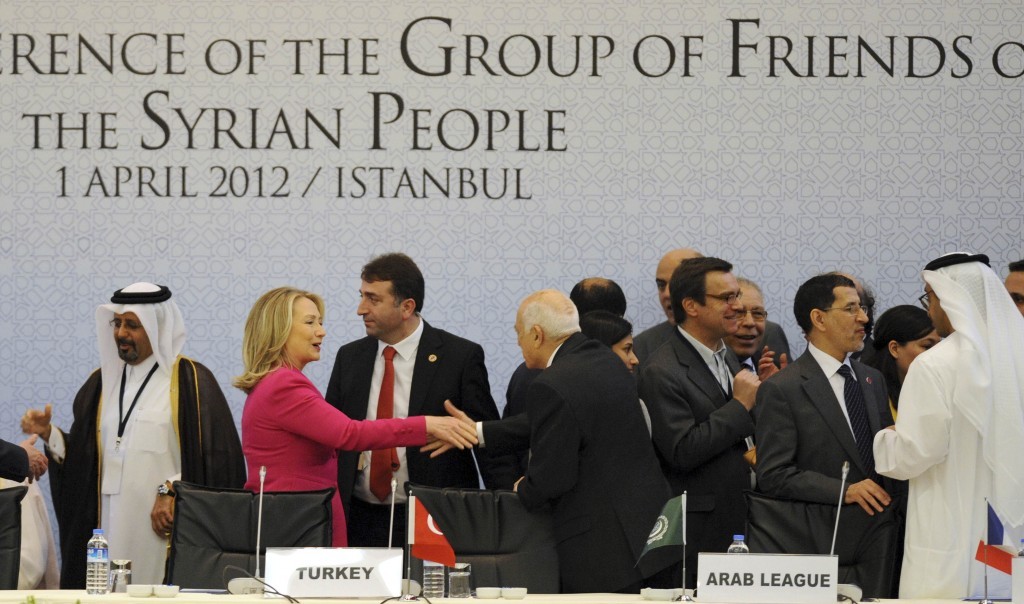
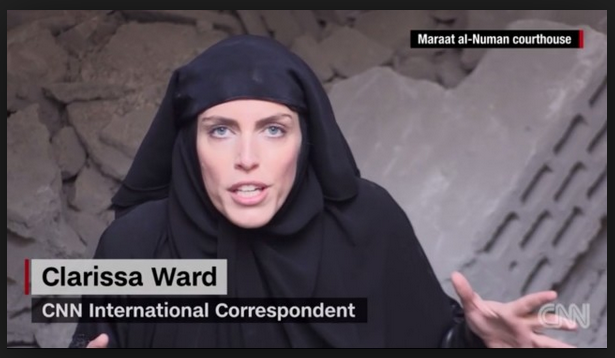


![A Palestinian harvesting olives in the West Bank [copyright: Jonathan Cook]](http://www.jonathan-cook.net/wp-content/uploads/2016/08/01-kafr-yasuf-e1470423482647.jpg)

![The entrance to Nisf Jubeil [copyright: Jonathan Cook]](http://www.jonathan-cook.net/wp-content/uploads/2016/08/IMG_6815pss-copy-e1470423196396.jpg)
![Khader Khader is experimenting with trees like apricot and plum [copyright: Jonathan Cook]](http://www.jonathan-cook.net/wp-content/uploads/2016/08/IMG_6806pss-e1470423334671.jpg)
![Nasser Abufarha, of Canaan Fair Trade, is adding new crops like the ancient grain, freekeh, [Courtesy: warscapes.com]](http://www.jonathan-cook.net/wp-content/uploads/2016/08/nasser_abufarha_podcast_feature_image_0-e1470422732601.jpg)

